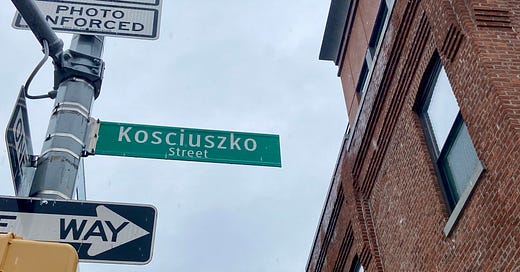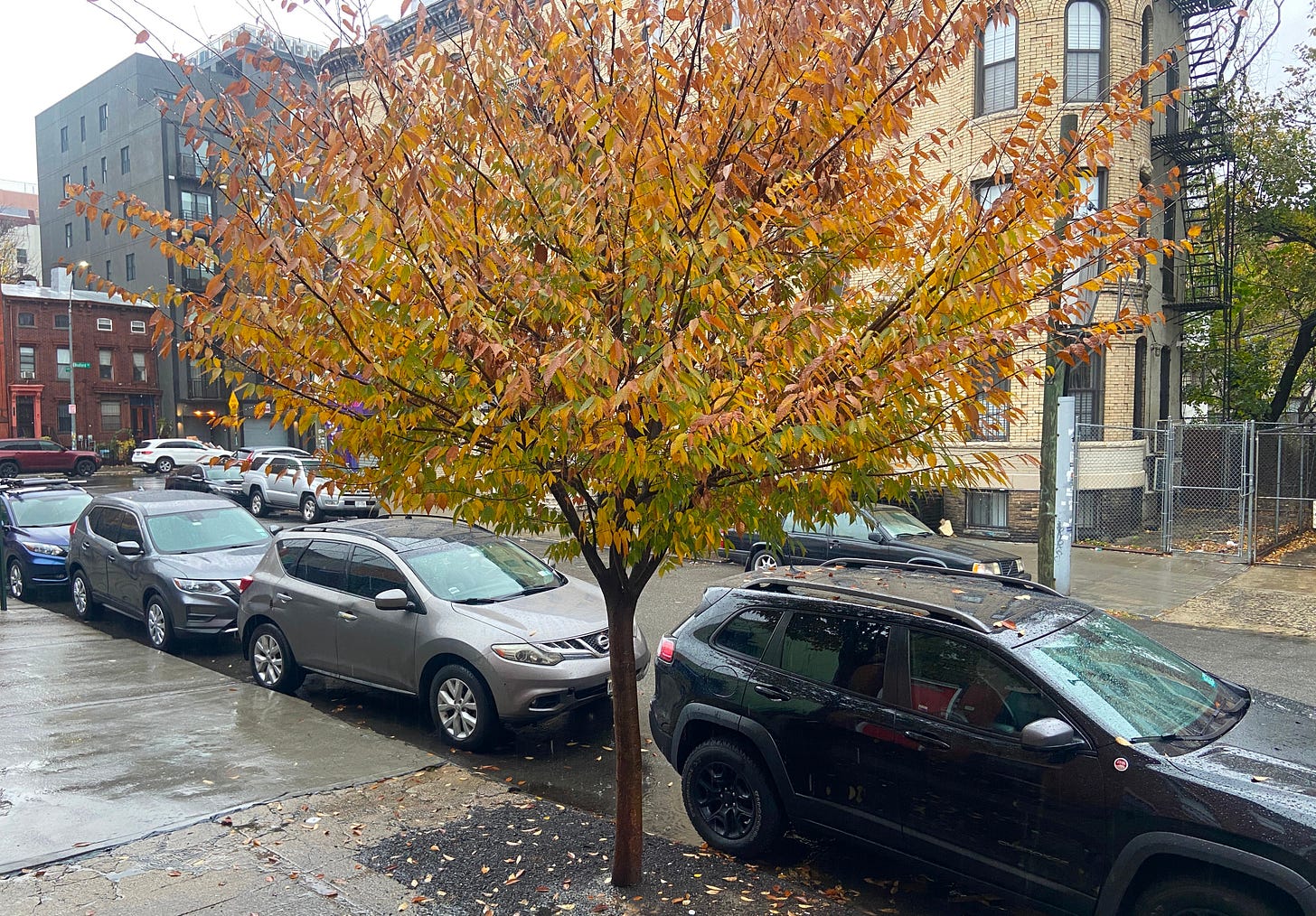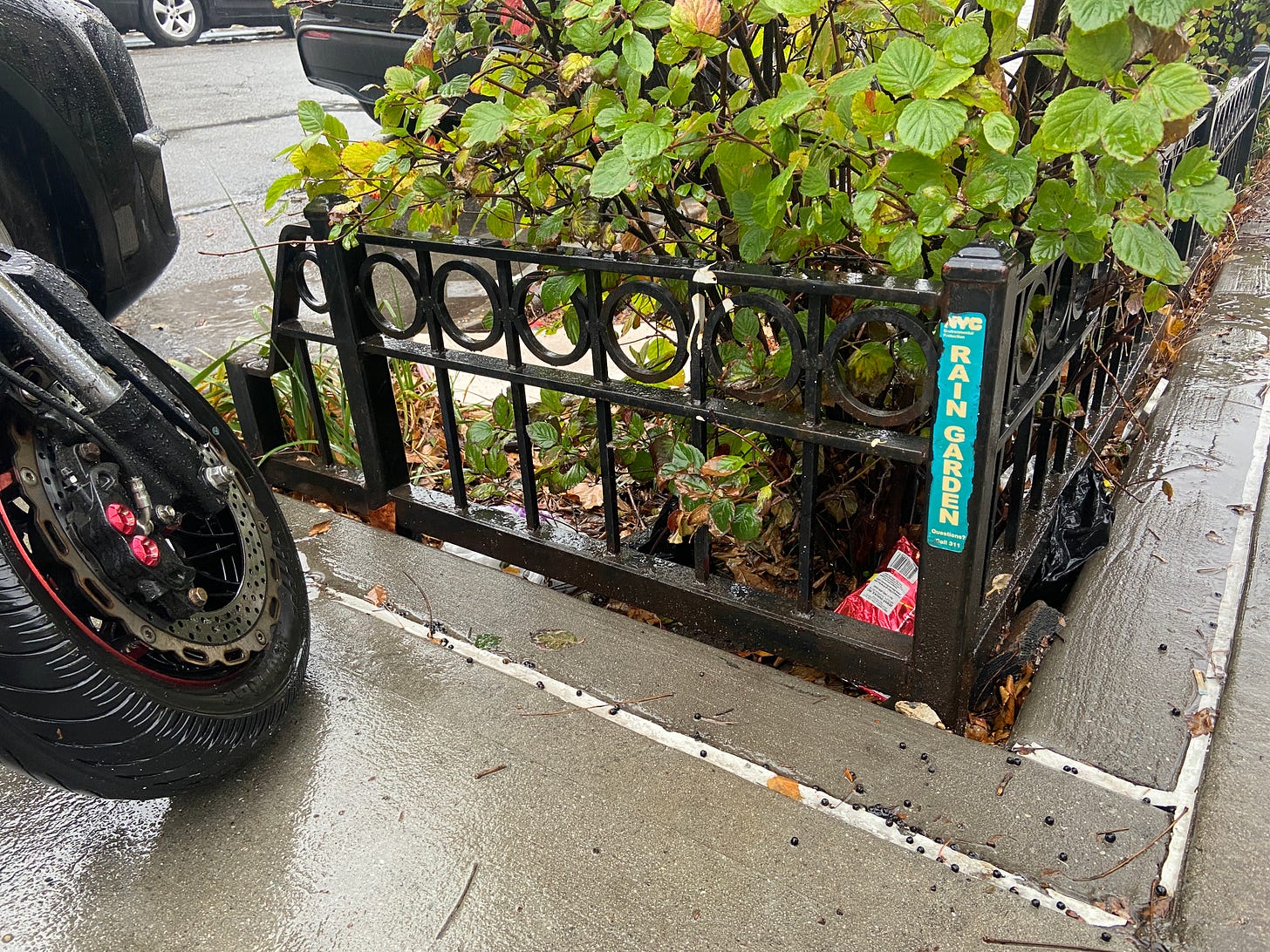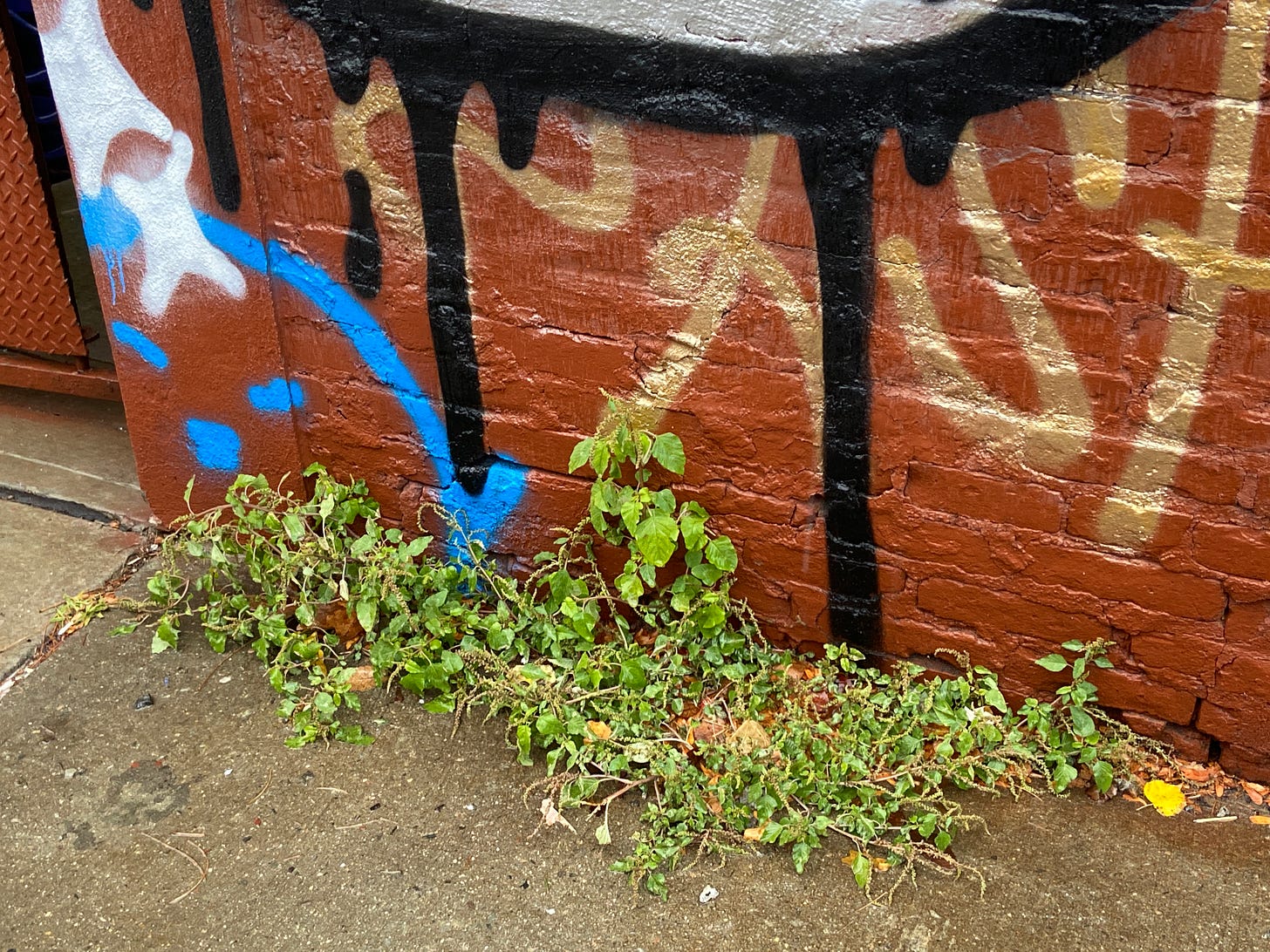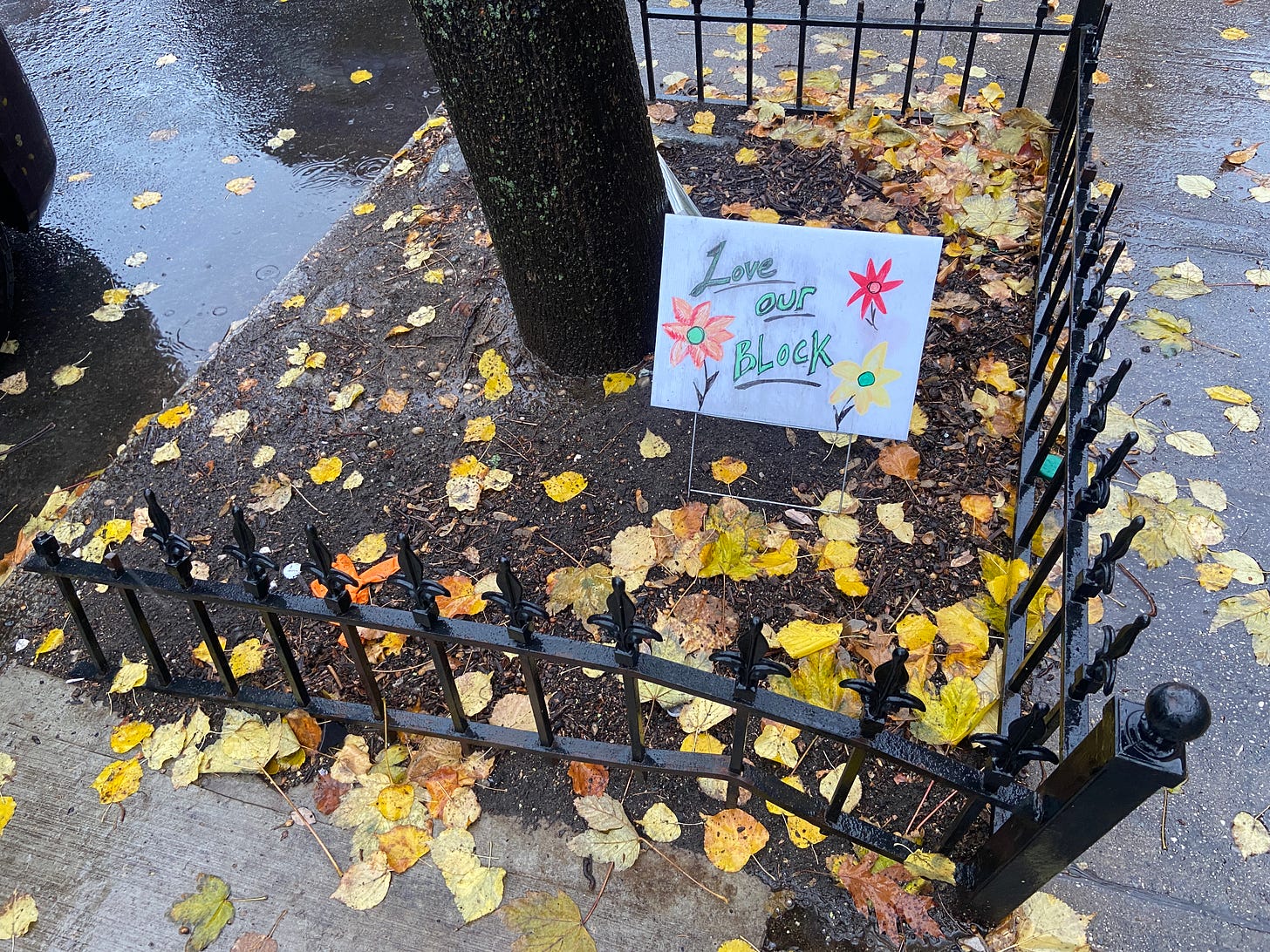For those who might not know, I became a New City Critics Fellow at the Architectural League of New York and Urban Design Forum back in September.
Earlier this week, Urban Omnibus published excerpts from our first writing assignment. We were tasked to take a walk around our respective neighborhoods and reflect on what we encountered on our strolls around the block. The endeavor was framed as “criticism as an act of love,” a practice of experiencing, discoursing, and sense-making rooted within relations of care and connection to a particular place.
As we embark on the holiday season, many of us are wrestling with the idea of home and all of its tangible and emotional complexities. In light of this, I’ve decided to publish publishing the full piece I wrote here. I hope you’ll join me as I share what I noticed about my beloved little slice of Brooklyn living on Kosciuszko Street.
When a single heavy rainstorm has the potential to bring New York City to a standstill, Kosciuszko Street offers a different kind of flow. Sitting inland at around 14 to 16 meters above sea level, this neighborhood has not dealt with the same anxieties of rising waters and flash flooding that’s overwhelmed its coastal and low-lying counterparts. Kosciuszko Street sits on a high ground that’s become especially desirable in this present moment of climate crisis.
“How do you pronounce it?” The river of letters always tumbles out, from the bureaucratic green of street signs, in responses to taxi drivers looking for directions, spilling across the 10-block strip that runs from the very outer edges of Clinton Hill eastwards to the beginning of Bushwick. Attempts to sound out the peculiar combination of consonants usually lead to two variations: “Co-shoe-sco” and “Cah-si-ah-sco.” Pronunciation gradually smoothes out on the tongue and jaw with a fluid ease.
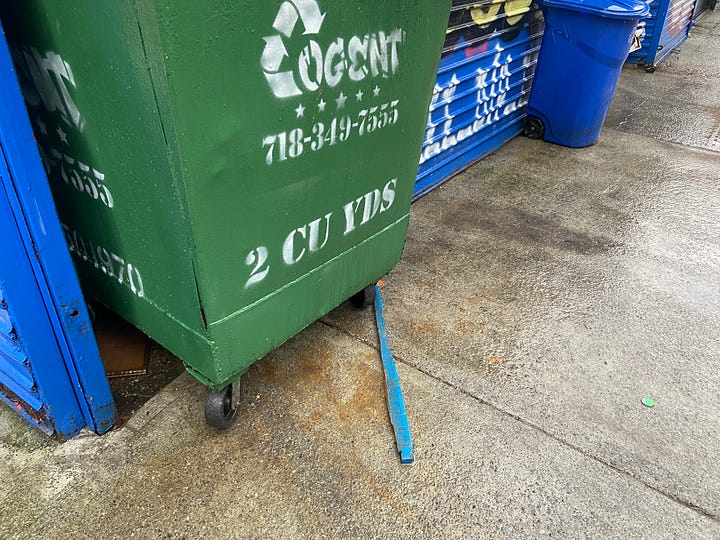

Entering onto the street from Bedford Avenue often requires a careful dance over a miniature tributary of viscous, pungent liquids leaking from the rusted dumpsters of the grocery store around the corner. There’s the gay bar that opened a couple of years ago, where one sees the sticky chaos of broken cocktail glasses and polychromatic sprays of vomit from the night before. The daycare next door that washes away flurries of chalk art with frothing bucketfuls of mop water. Further still, the auto body shop that lets wiper fluid and oil bloom across the asphalt.
When it rains, the temporal torrents along the curbside recall the moats of the street’s namesake, Thaddeus Kościuszko. A Revolutionary War-era military engineer known for incorporating water into his fortifications, he dammed streams and dismantled bridges to block the advance of British forces and give American troops time to retreat across the Hudson River. He scouted safe passage over water crossings and established defensive lines along the banks of the Delaware.
In the hotter months, waterfalls trickle down from cheap air conditioning units, anointing the sidewalk the erosive of their mechanical comfort. There are the summer block parties, where open hydrants send a soothing iridescent mist into the air and fill kiddie pools and water guns that keep the brutal heat away. The neighbors who set up their grills on the sidewalk and pass around paper-cupped libations so cool it makes your teeth hurt. There are the basketball courts where the players of P.S. 256 send graceful arcs of sweat and steam into the air no matter the season.
When the Parks Department finally responded to queries for a sidewalk tree planting, the block welcomed Kosciuszko Street’s newest resident with regular waterings from their kitchen taps. Now, its mulched surround absorbs the excesses of what the rest of the neighborhood cannot.
The street’s other green infrastructure is a scattered patchwork. Concrete-covered infiltration basins or rain garden bioswales channel runoff through openings along the curbside or into micro-landscapes of native pollinator plants. Bright blue signs along the rain gardens’ metal fencing draw attention to their unique, beautifying presence on the street—even as their curated fissures of soil, drainage stones, and vegetation become clogged with accumulations of plastic detritus.
Continue to walk and the fluid dance continues: couples who sit on their front steps and sip their steaming coffee together before the start of the work day (or share a drink when the sun goes down). Aunties and grandmothers who gossip between sips of iced beverages and drags of their cigarettes. Old men lumbering back from the bodega with sagging bags of liter bottles. Friends welcome the weekend with uncorked bottles of wine and cans hugged by brown paper bags. In the early morning hours keepers of the Kosciuszko Community Garden maneuver their hissing hoses and watering can cascades over their carefully-tended plots.

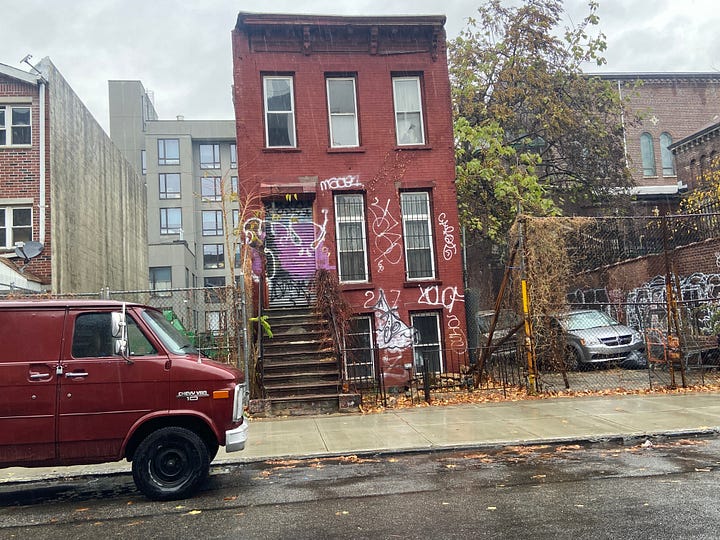
Passing by the Kosciuszko Pool between Nostrand and Marcy Avenue, one can smell the chlorine radiating out from its monumental, sun-bleached blue. Opened as the Bedford-Stuyvesant Community Pool in 1971 (at the cost of displacing 88 families who lived on the property), the city sought to expand public access to water-based recreation through a growing network of public pools. On a summer’s day, one can hear the splashing laughter of children, the scolding of lifeguards, and the metered plunges of exercise laps. Spent swimmers trudge back towards home, leaving wet trails of flip-flop footprints and wrung out hair in their wake.
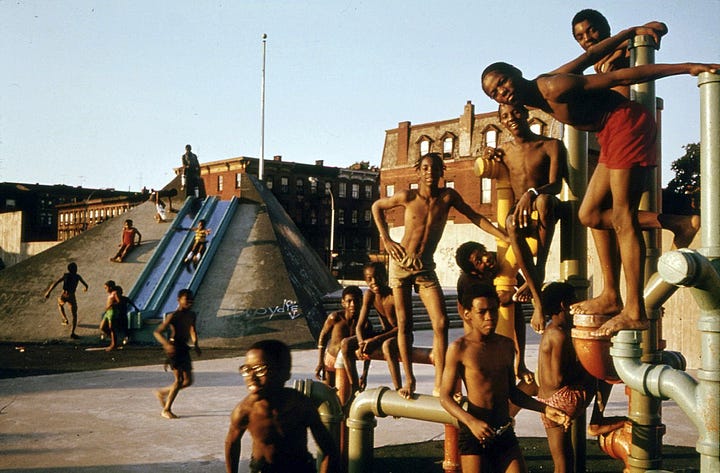
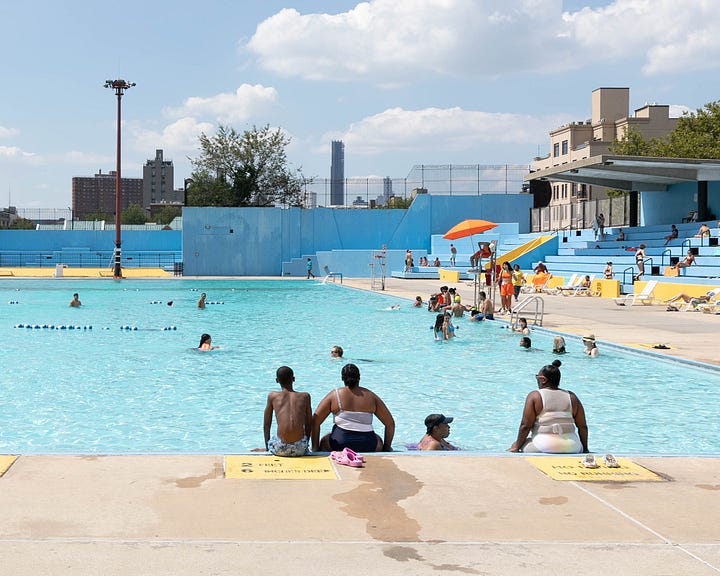
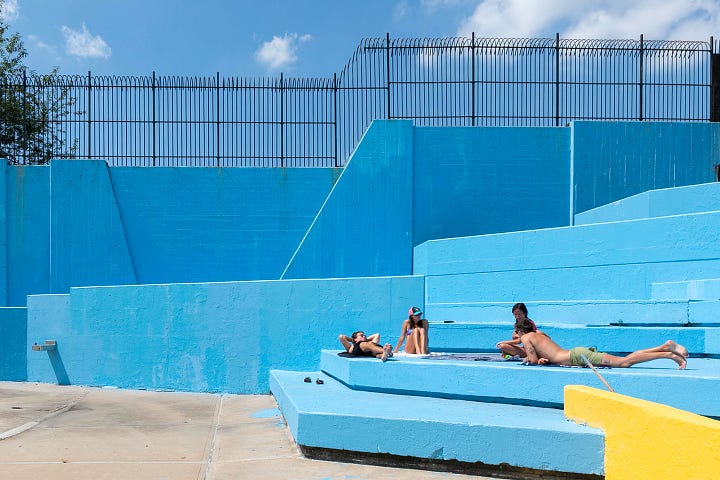
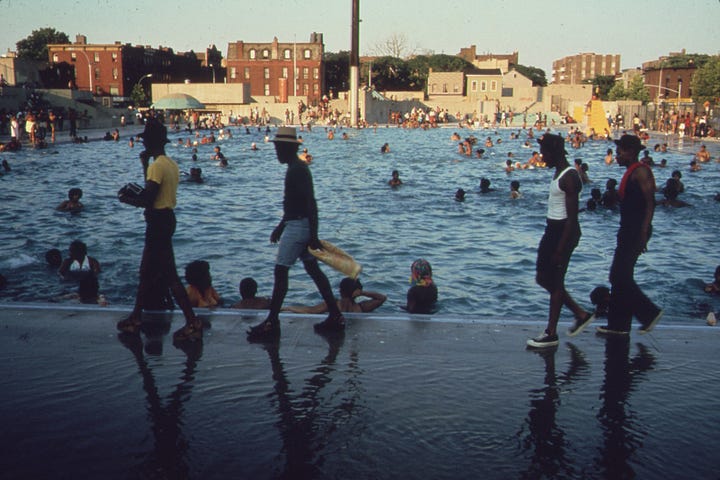
Thaddeus Kościuszko traveled hundreds of miles across the open ocean between America and Poland. Like many New Yorkers, he called several places home. One wonders if he ever traversed this piece of elevated earth that, centuries later, someone decided to paved over and name after him.
As the temperature drops, those puddles and streams are replaced with the drippings of discarded coffee, the grease and spillage from bagged takeout, and the splatters of urine from territorial dogs and humans cursing the absence of public restrooms on this mostly residential street. The sidewalk becomes an artificial hydrology of reds, greens, and blues from melted popsicles, stalactitic drips of fresh graffiti paint or scattered salt dissolving the slick of fresh fallen snow.
Did Thaddeus learn to map the contours of Brooklyn’s waterways through currents that flowed between his fingertips? Drink in the surprise of cooling rain on a hot summer day? Seek shelter from storms under the same species of trees replanted now into angular cuts of concrete? What would he have thought of the new movements of our liquid effluent? The fluidity of our lives re-engineered into dislocating rivers of drainage pooling together the excess spillages of our urban lives? On Kosciuszko Street, even the smallest trickle can become a transformative force.

